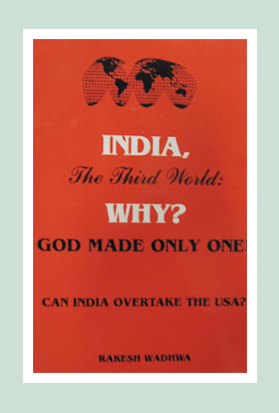How the Concept of Laissez Faire has Evolved
Laissez Faire is a term that finds its etymological roots in the French language, in which it means ‘allowed to do’. Also referred to as ‘let it be’ economics, Laissez Faire refers to a sect of political thought that does not favor political interference in private sector free markets. It was claimed to have first been first coined by Marquis D’Argenson, who was to later become Louis XV’s foreign minister during the Austrian War, in his work titled Memoires, published in 1736.
Various political groups throughout American history have made it their clarion call, right from Thomas Jefferson to recent political leaders such as Ron Paul.
Laissez Faire is Born
The true birth of this term dates back to the Declaration of Independence, which announced the end of the British Empire in America and declared the states as independent. The one statement that demonstrates best the use of the concept of Laissez Faire by Jefferson is quoted by Dolbeare et al (2004) – “that all men are created equal, that they are endowed by their creator with certain unalienable Rights that among these are Life, Liberty and the pursuit of Happiness”. The statement emphasizes the core value of Laissez Faire. It is also the basis that it shares with the Jeffersonian line of thinking, or Jeffersonism. Both endorse the twin pillars on which a free market economy can thrive, a small government and individual rights, combined with individual responsibility.
Laissez Faire Reincarnated
In its next reincarnation, Laissez Faire took the form of the ideals of Abraham Lincoln, the sixteenth President of the United States, which played a role in the movement for the abolishment of slavery that he orchestrated. He was influenced to a large extent by Jeffersonism. Despite the manner in which the emancipation of slaves was thrust upon member states by his government, the act itself is pro Laissez Faire, as it upholds the concept of equality among the labor force. We find further proof of his Laissez Faire mindset in his Second Inaugural Address, where he supported deportation of coloured laborers to plantations outside the country, assuring the others that there will be no drop in their wages and voicing dissent against government intervention in the matter. “Let it run its own course” was his intent. By abolishing slavery and advocating freedom for the labor workforce, he demonstrates in a stellar manner the evidence of being a Laissez Faire proponent. This formed the bedrock of the Free Labor Movement.
Laissez Faire Evolves to an Exalted Place
During the age of Social Darwinism, which was coined by Herbert Spencer to imply the biological concept of Survival of the Fittest to the economic scenario, the stage for a dramatic comeback was set in the form of the transition that the United States of America underwent from being a predominantly agricultural to an industrial nation. It provided fertile ground for a pro Laissez Faire mindset to flourish. Immigration allowed the labor force to strengthen in numbers; businesses mushroomed due to industrialization, competition became fierce and the rise of business giants like Rockefeller meant that an ideology was required to justify growth. The most iconic Social Darwinist of the time, William Graham Summer, in his book titled ‘What the Social Classes Owe Each Other’, gave emphasis on individualism, inevitability of inequality, free trade and the struggle for survival as a good and in the process Laissez Faire saw its zenith in a pro free market environment.
Laissez Faire Suffers Setbacks
Its exalted place on the highest economic pedestal suffered a jolt during the Progressivist Movement, wherein Progressives like Edward Bellamy and Herbert Croly, argued against seemingly cutthroat capitalism that was ravaging industrialism. In his book the Promise of American Life, Croly quotes, “The democratic principle requires an equal start in the race…the chance which the individual has to compete with his fellows and take a prize in the race is vitally affected by material conditions over which he has no control with the aid of exceptional strength and intelligence he may overcome the odds against him and win out.”(Dolbeare et al, 2004).
Laissez Faire Regains its Lost Strength
Laissez Faire saw its nadir when advocates of Keynesian ideology blamed it for the Great Depression of 1933. However, it was never without support; howsoever deemed inadequate, it nonetheless survived. Laissez Faire found its greatest champion in the 20th century in the form of economist Milton Friedman, who gave the microeconomic theory of monetarism to the world. He advocated a return to Laissez Faire in saying that micromanagement of markets must be done by the private sector, not the government; that Keynesian methods lead to stagnation and that the rate of natural employment must be natural. For his contributions he has been given a place alongside Adam Smith by Princeton University economist Paul Krugman.
Screenwriter Ayn Rand even built a whole school of individual centric thought around the idea, called Objectivism. According to it, man must engage in rational selfishness to drive himself towards economic prosperity. She is seen not as a philosopher in the field but rather a flagbearer for the Modern Libertarian Movement for contributing to traditional Laissez Faire capitalism.
Finding voice in Ronald Reagan and Ron Paul, Republican candidate for the 2008 elections, but also languishing under the recent economic slump as more business giants plead with the government for monetary aid, it remains to be seen whether Laissez Faire will be resurrected once again, or stamped out of existence forever.
 Rakesh Wadhwa. Ever since, I was a school boy, I knew India was on the wrong path. Socialism was just not what we needed to get ahead. Government controlled our travel; government controlled our ability to buy and sell; and government controlled our freedom to move our money. My life has focused on the inherent rights people have. When I was in college, I never understood, what the governments meant by their "socialistic attitude". If people are free to buy, sell and move their capital themselves without any restrictions by state, then the welfare of people is inevitable & hence the countries they live in will become wealthy. The government has no right whatsoever, to point a finger at me or my business. I am not a revolutionary. I just want to light up my cigarette and not get nagged about it. I believe in non-interfering attitude to attain more.
Rakesh Wadhwa. Ever since, I was a school boy, I knew India was on the wrong path. Socialism was just not what we needed to get ahead. Government controlled our travel; government controlled our ability to buy and sell; and government controlled our freedom to move our money. My life has focused on the inherent rights people have. When I was in college, I never understood, what the governments meant by their "socialistic attitude". If people are free to buy, sell and move their capital themselves without any restrictions by state, then the welfare of people is inevitable & hence the countries they live in will become wealthy. The government has no right whatsoever, to point a finger at me or my business. I am not a revolutionary. I just want to light up my cigarette and not get nagged about it. I believe in non-interfering attitude to attain more. 
 The Bastiat Award is a journalism award, given annually by the International Policy Network, London. Bastiat Prize entries are judged on intellectual content, the persuasiveness of the language used and the type of publication in which they appear. Rakesh Wadhwa won the 3rd prize (a cash award of $1,000 and a candlestick), in 2006.
The Bastiat Award is a journalism award, given annually by the International Policy Network, London. Bastiat Prize entries are judged on intellectual content, the persuasiveness of the language used and the type of publication in which they appear. Rakesh Wadhwa won the 3rd prize (a cash award of $1,000 and a candlestick), in 2006.
1 Comment
Anand Gurumoorthy
November 30, 2012Good article. May be you should include Hayek and von Mises as well. Henry Hazlitt’s “Economics in One Lesson” is a classic along these lines.